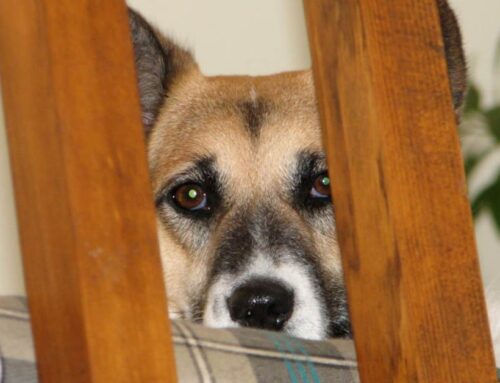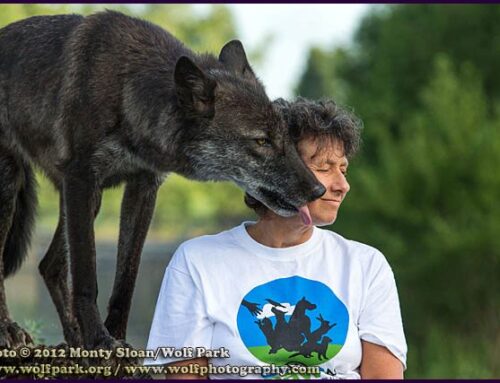One of the most useful behaviors any dog owner can teach their dog is to look at them. Trainers teach this checking-in behavior differently. I’ll share my favorite.
Like any behavior, the more a dog practices it and gets rewarded for it, the better they’ll get at it. If I want my dog to pay attention to me it’s easier if I’ve rewarded them whenever they’ve paid attention to me in the past. While I don’t teach the behavior with a cue (‘hey’, ‘look at me!’) it’s simple enough to cue them to do it once they are in the habit of looking at me anyway.
To begin I start by acknowledging and rewarding my dog for looking at me, for any reason, in a place without a lot of distractions. My response is to look back at them, smile, nod, praise them (nice! thank you! yes!) and then hand them a treat. By the time a dog figures out what they need to do to relieve me of treats I swear they must think they are living with the most simple-minded human on the planet.
I’m not asking them to look at me, I am waiting to get the behavior and reward it. Then we take the behavior on the road, literally. While we’re out on walks anytime my dogs indicate that they are noticing me, looking for or at me, I smile, nod, praise and if they are close enough, hand them a treat. If we’re on our off leash walks I let them choose whether to come to me for a treat or not.
Find places with more distractions where you can work on this. It might be sitting in your car, in a training class, in a friend’s living room. Be prepared to wait for the behavior. If I start to feel that it’s taking too long I might do something that provokes the behavior, like clearing my throat or shifting my weight. If I’m in a place where it might be harder for my dog to focus on me the rewards I use are super awesome. Toys can work as rewards as well.
Do this enough and you end up with a dog with a checking-in habit. Should a situation arise which takes your dog’s attention away from you, it’s easier to ask them for their attention and get it because they are already so good at doing it. It does mean that you have to do your part and pay attention to your dog so you can catch check-ins, which for many dogs, happen far more than their owners ever notice. When our dogs do look at us, it’s not a random act, nor is it likely meaningless to them. They are attempting to gather information from us; which way are you going at the trail junction, what do you think of that noise we just heard, or about that person who is walking toward us?
Most of our dogs want to know what our opinion is in many situations. That’s often more then we can say about some of the people we spend time with.






